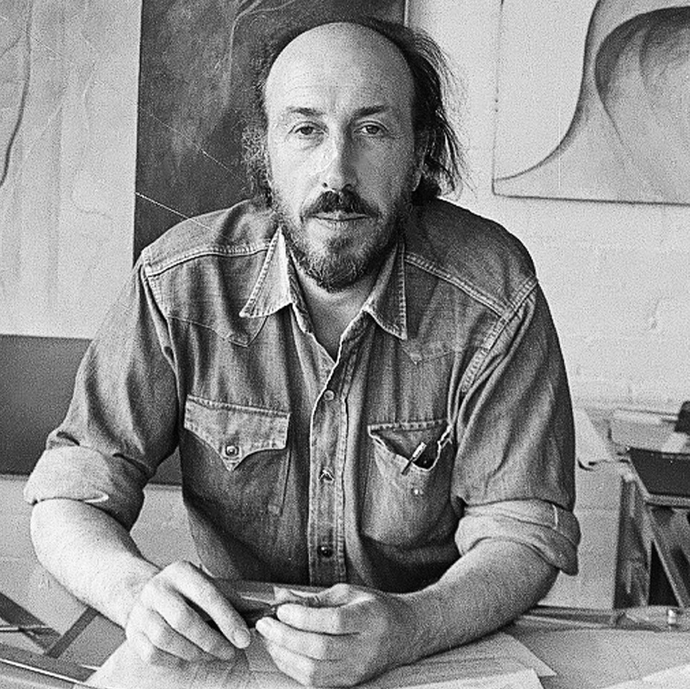
Richard Hamilton
Richard Hamilton, an English artist renowned for pioneering some of the earliest works of Pop Art, employed diverse techniques throughout his artistic journey.
Biography of Richard Hamilton
Richard William Hamilton was born on February 24, 1922, in London. He left school to work at an electrical components firm. There, he developed a facility for draughtsmanship skills and refined them through evening classes at Saint Martin’s School of Art, the Westminster School of Art, and later the Royal Academy of Arts.
After a period as a technical draughtsman during World War II, he returned to the Royal Academy but was eventually expelled for "not profiting from the institution." Following his National Service, Hamilton enrolled as a student at the Slade School of Art, where he remained from 1948 to 1951. During his last year at the school, he began showcasing his work in London. An abstract oil painting titled "Respective" (1951) demonstrates the artist's initial exploration of visual perception.
As a member of The Independent Group (TIG), a collective of young artists, writers, and critics who gathered at the Institute of Contemporary Arts in London, his interest in broader cultural developments became evident. The group aimed to challenge the perceived exclusivity of highbrow modernism. The artist began creating posters and exhibiting at the Institute of Contemporary Arts, where he was introduced to Eduardo Paolozzi’s proto-pop collages and Marcel Duchamp’s earlier collotype portfolio, "La Mariée mise à nu par ses célibataires même," in 1952. Additionally, during the 1950s, he taught at the Royal College of Art, mentoring artists such as David Hockney and Peter Blake.
In 1956, Hamilton created the collage "Just what is it that makes today's homes so different, so appealing?" for the catalog and posters of the "This Is Tomorrow" exhibition at Whitechapel Gallery in London. This work is widely regarded as one of the earliest examples of pop art, marking Richard Hamilton as a key artist of the 20th century.
In the 1960s, he became friends with Paul McCartney and designed the cover and poster collage for the Beatles’ "White Album." Over the following decades, Hamilton explored various techniques, including photoetching, vacuum-formed acrylic, and early computer graphics.
Hamilton experienced a late-career resurgence, highlighted by a retrospective at the Tate Gallery in 1992, following his initial exhibition there in 1970. A year later, he represented the United Kingdom at the 1993 Venice Biennale. As his life came to an end, Richard Hamilton left an enduring impact on a new generation of artists, including his students and the emerging Young British Artists (YBAs) who gained prominence in the 1990s. The artist passed away on September 13, 2011, in Oxfordshire.
Richard Hamilton's Art Style
Though the artist embraced a diverse range of techniques, his most iconic pieces, including "Study for a Fashion Plate" (1969), were executed in collage. Reflecting on the creative process, he once contemplated:
Hamilton's renowned collages, which laid the foundation for Pop art, delved into the interplay between fine art, product design, and popular culture. His distinctive style is epitomized by his most iconic creation, "Just What Is It that Makes Today’s Homes So Different, So Appealing?" (1956). This artwork showcases a medley of unrelated images meticulously clipped from magazines, forming an unusual domestic setting that includes a monochromatic depiction of a nude couple.
Years:
Born in 1922
Country:
United Kingdom, London